How Gutters Evolved—and How Spring Rain Gutters Is Leading the Way
Rain gutters may not be the most glamorous part of a home’s exterior—but they are one of the most important. These simple systems are quietly working in the background, protecting your home from water damage, foundation erosion, flooding, mold, and more. But where did they come from? Why were they invented? And how have they evolved into the high-tech, efficient systems we rely on today?
Let’s dive into the history of gutters—from ancient ingenuity to modern mastery—and explore how Spring Rain Gutters fits into the latest chapter of this long and fascinating story.
Ancient Origins: Managing Rainwater from the Start
The need to control rainwater isn’t new. In fact, it’s one of the oldest home improvement challenges in human history.
The Indus Valley Civilization, as far back as 3000 BCE, used carefully constructed drains and water management systems in cities like Mohenjo-Daro and Harappa. These early people recognized that controlling the flow of rainwater could prevent flooding and improve sanitation—both essential for health and longevity.
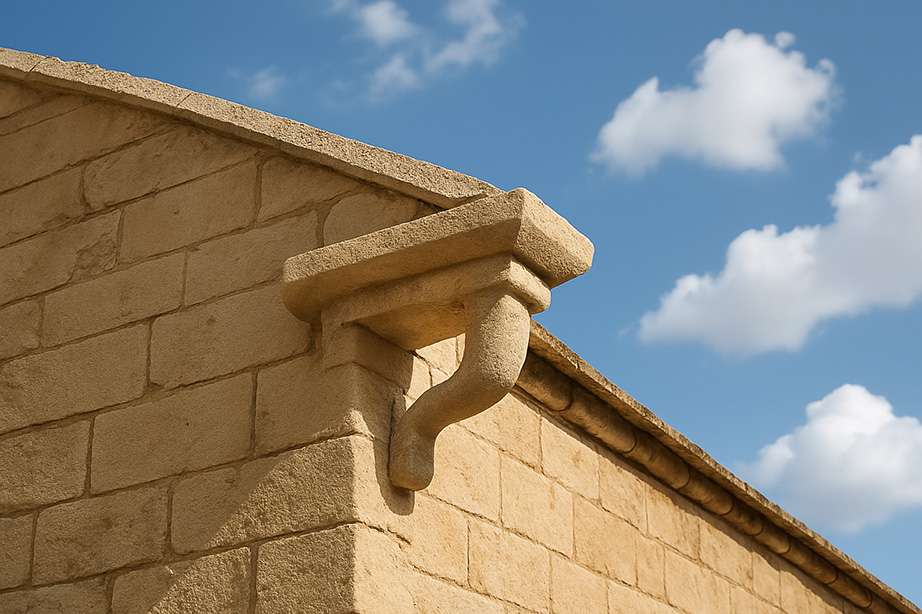
Meanwhile, Egyptians created water channels carved into stone to irrigate crops and protect their structures from damage. This early form of drainage would evolve into what we now know as gutters.
But it was the Romans who gave us the first real precursor to modern gutter systems. Their intricate aqueducts, tiled roofs, and downspouts made of lead and clay were all designed to collect and control rainwater. Roman architects even designed sloped roofs to efficiently guide water into gutters, protecting the walls and foundations of their grand stone buildings.
This early understanding laid the groundwork for everything that came next.
Medieval Europe: Gutters Become Art
During the Middle Ages, gutter systems took on a new form in Gothic architecture. Enter the gargoyle—those dramatic, creature-like sculptures found on cathedrals and castles.
But gargoyles weren’t just decorative. They were actually functional downspouts, designed to shoot rainwater away from stone walls and prevent erosion. Crafted from carved stone and placed strategically along rooftops, they were early examples of form meeting function in gutter design.
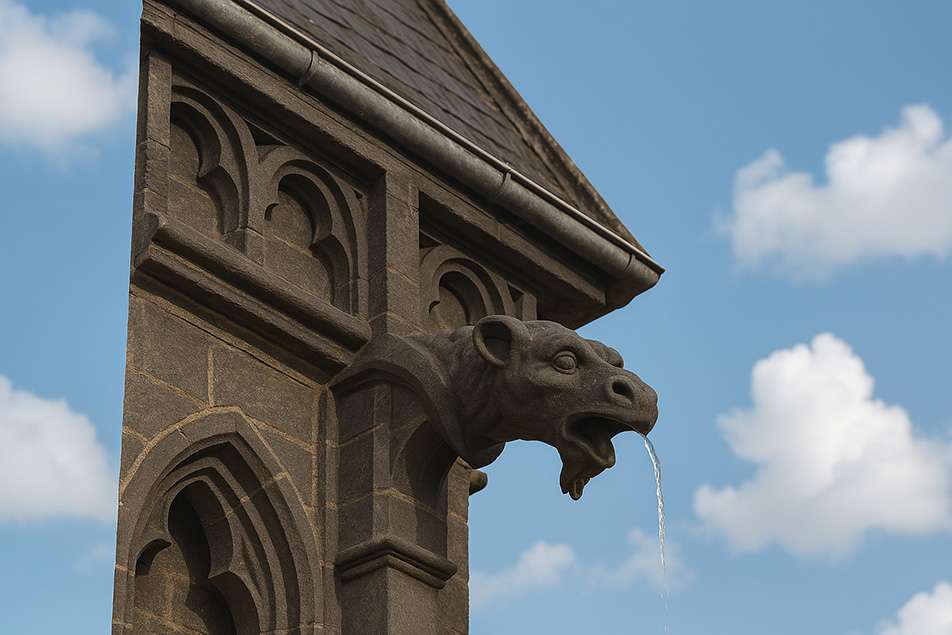
In smaller homes, people often used wooden or stone troughs to redirect water. These primitive systems weren’t as durable or efficient but showed how even back then, people were attempting to protect their homes from the elements.
The Industrial Revolution: Innovation Takes Shape
The 18th and 19th centuries brought about a huge leap in construction and architecture. With the Industrial Revolution came access to stronger, more flexible materials like cast iron—perfect for gutters.
Cast iron gutters became popular throughout Victorian England, particularly in urban areas. Their durability, ease of mass production, and weather resistance made them a go-to choice for homes, factories, and public buildings alike.
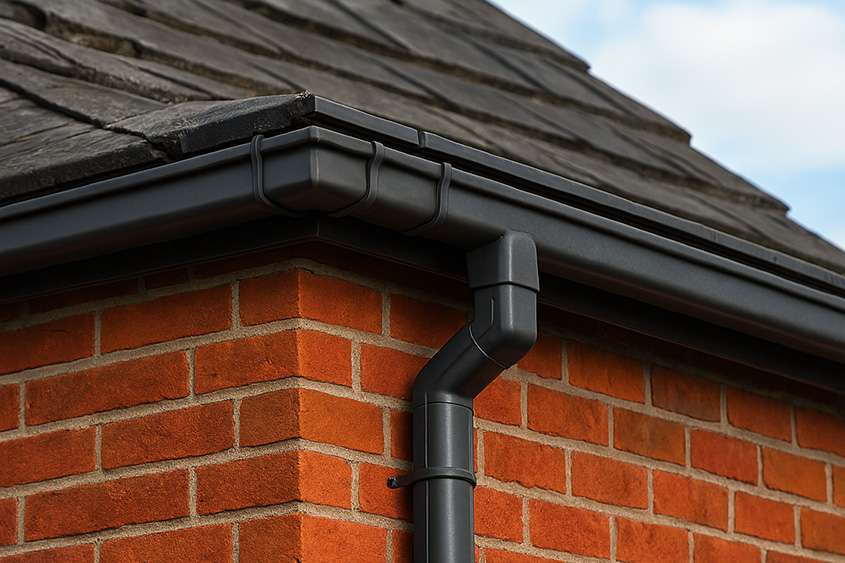
Around this time, homes also began featuring separate stormwater and sewage systems, meaning gutters could redirect water more safely and cleanly. The evolution of urban planning went hand-in-hand with the modernization of gutter design.
20th Century Advancements: Modern Gutters Take Shape
By the mid-1900s, gutters had transformed again—this time with the introduction of aluminum and galvanized steel. These materials were lightweight, resistant to rust, and could be customized on-site, leading to the rise of seamless gutters.
Seamless aluminum gutters were a game changer. No more joints and seams meant fewer leaks, easier installation, and greater protection. Alongside this, vinyl became popular for its affordability and simple DIY appeal, though it lacked the durability of metal systems.
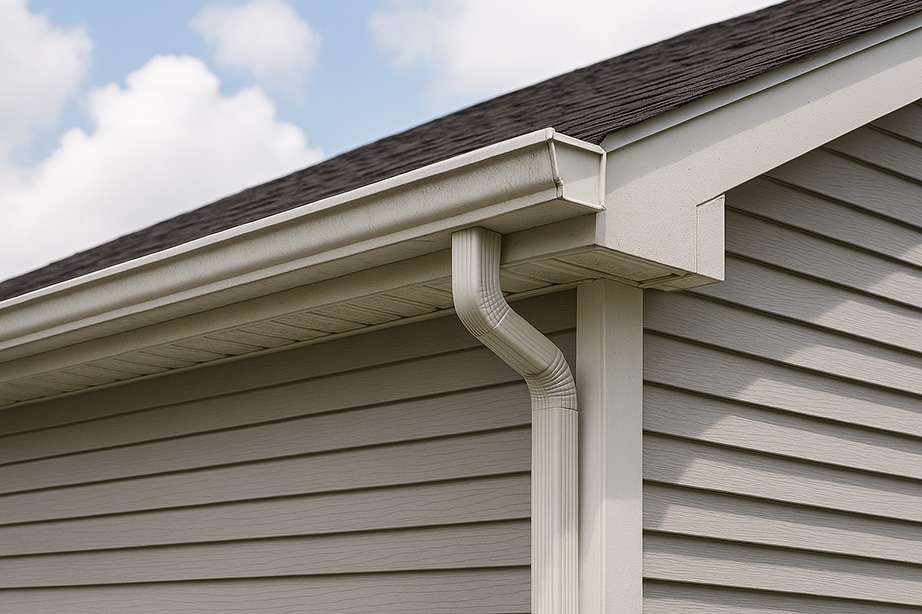
As homes grew more complex and climates more unpredictable, gutters had to keep up. And they did—adapting in form, material, and mounting systems to become more durable, efficient, and low maintenance.
Traditional vs. Modern Gutter Mounting: A Hidden Issue
One of the last frontiers in gutter innovation wasn’t the gutter itself—but how it’s installed. For decades, gutters were mounted with nails, screws, or spaced hangers every 24 inches or so. This method left long stretches of gutter unsupported, creating weak spots where sagging, leaking, or breakage could easily occur—especially under snow and ice.
It also meant gutters were frequently punctured, leading to water damage in fascia boards, rooflines, and exterior walls over time.
Enter the innovation of the Continuous Hanger™ system—a game-changing approach that supports gutters along their entire length, eliminating weak points and preserving the structural integrity of the home.
Today’s Gutters: Smarter. Stronger. Sleeker.
Today, we expect our homes to perform—and that includes our gutters. With extreme weather becoming more common, and homes becoming more architecturally complex, it’s no longer enough to rely on outdated mounting systems or basic materials.
That’s why companies like Spring Rain Gutters are leading the way with advanced technology, thoughtful design, and high-performance solutions like our patented HoverPro™ Floating Continuous Hanger™ with built-in Gutter Guard.
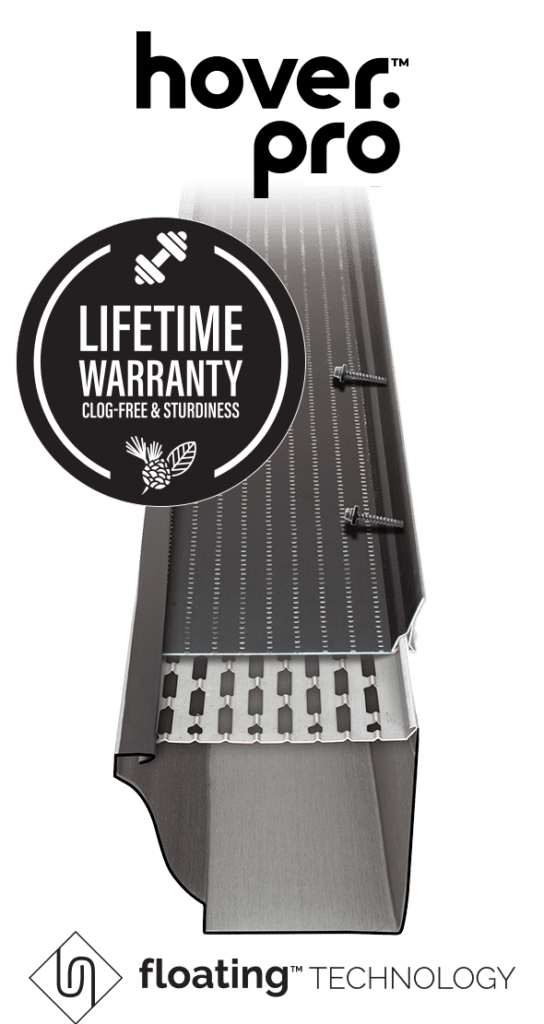
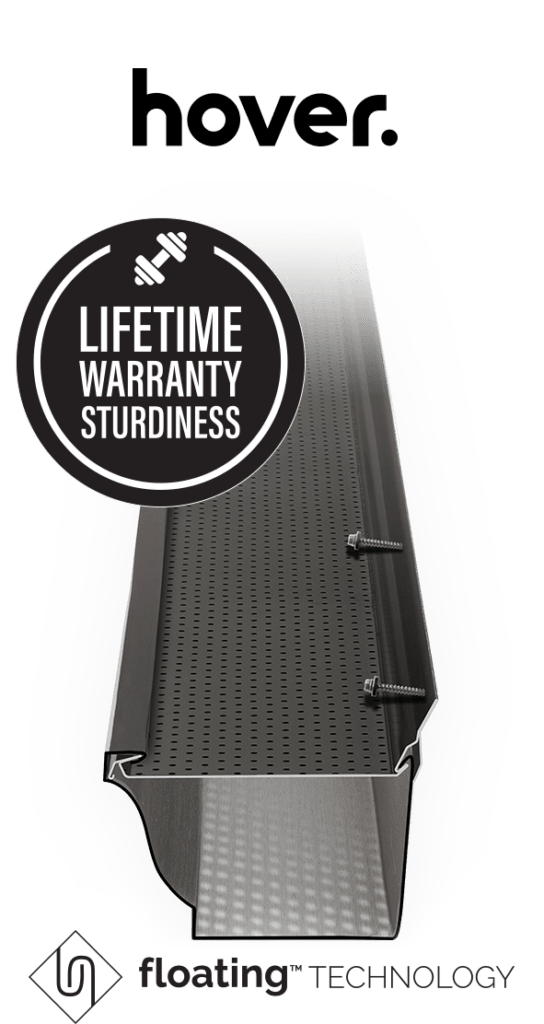
How Spring Rain Gutters is Shaping the Future
Today, we expect our homes to perform—and that includes our gutters. With extreme weather becoming more common, and homes becoming more architecturally complex, it’s no longer enough to rely on outdated mounting systems or basic materials.
That’s why companies like Spring Rain Gutters are leading the way with advanced technology, thoughtful design, and high-performance solutions like our patented HoverPro™ Floating Continuous Hanger™ with built-in Gutter Guard.
✔️ Hover™ Floating Technology
Rather than screwing into your fascia and risking long-term damage, Hover™ Technology suspends the gutter, allowing it to move with the elements without losing strength or shape.
✔️ Springback Technology™
Heavy snow? No problem. This technology distributes pressure evenly along the entire length of the gutter system, preventing sagging and distortion—even under 400+ lbs per linear foot.
✔️ Built-In Gutter Guard
Leaves, twigs, pine needles, and pests are no match for the integrated guard system that comes standard with HoverPro™. Enjoy fewer cleanings and better water flow all year long.
✔️ Continuous Support = No Weak Spots
Say goodbye to sagging. Our continuous hanger design offers full-length support, preventing gutter separation, warping, or collapse.
✔️ Weather-Ready for North America
HoverPro™ is designed with the toughest conditions in mind—ensuring your gutter system can handle whatever Mother Nature throws its way.
From Ancient Roots to Modern Results
Gutters have come a long way since the days of carved stone and lead piping. Today’s systems are engineered for strength, beauty, and long-lasting protection.
At Spring Rain Gutters, we combine centuries of purpose with modern innovation—providing homes with the strongest gutter system available today.
Because protecting your home shouldn’t be optional—it should be exceptional. 💧
Ready to Upgrade Your Gutters?
Ready to upgrade your gutters and give your home the protection it deserves? 🏠 Experience the future of gutter systems with HoverPro™ by Spring Rain Gutters—the innovative solution designed to withstand the toughest weather while keeping your gutters clog-free and structurally sound. For more information or to schedule your consultation, give us a call at 208-370-8058 or visit us online. Let’s take your gutter game to the next level!
References:
- Possehl, Gregory L. The Indus Civilization: A Contemporary Perspective. AltaMira Press, 2002.
- Butzer, Karl W. Early Hydraulic Civilization in Egypt: A Study in Cultural Ecology. University of Chicago Press, 1976.
- Hodge, A. Trevor. Roman Aqueducts & Water Supply. Duckworth, 1992.
- Coldstream, Nicola. Medieval Architecture. Oxford University Press, 2002.
- Stratton, Michael. The Terracotta Revival: Building Innovation and the Image of the Industrial City in Britain and North America. Taylor & Francis, 1993.
- Rain Gutter Wikipedia
